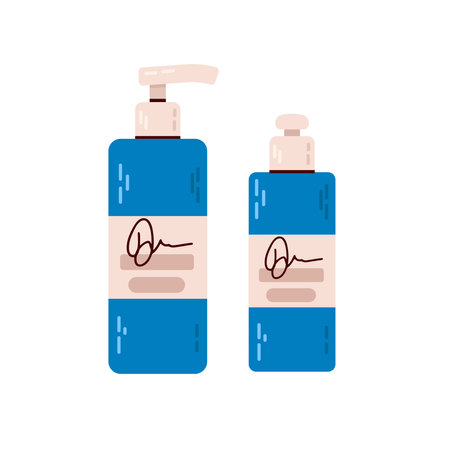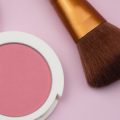1. Start with a Gentle Cleanser
If you have dry skin, the first and most important step in your skincare routine is using a gentle, hydrating cleanser. Harsh cleansers that contain sulfates can strip away your skin’s natural oils, leaving it feeling tight, flaky, and even more dehydrated. Instead, look for a sulfate-free formula that helps maintain your skin’s moisture barrier while effectively removing dirt, oil, and impurities.
Why Sulfate-Free Matters
Sulfates are cleansing agents commonly found in soaps and shampoos. While they’re great at removing oil and grime, they can be too aggressive for dry or sensitive skin types. Choosing a cleanser without sulfates helps preserve your skin’s natural lipids and reduces the risk of irritation.
Hydrating Ingredients to Look For
When shopping for a cleanser for dry skin, check the label for these moisturizing ingredients:
| Ingredient | Benefits |
|---|---|
| Glycerin | Attracts moisture to the skin and helps maintain hydration. |
| Hyaluronic Acid | Binds water to the skin, giving it a plump and hydrated feel. |
| Aloe Vera | Soothes dryness and calms irritation. |
| Ceramides | Support the skin barrier and lock in moisture. |
How to Cleanse Without Over-Drying
The way you cleanse is just as important as what you use. Follow these simple steps to clean your face without compromising your skin’s moisture:
- Use lukewarm water: Hot water can strip away natural oils, so stick with warm—not hot—water when washing your face.
- Apply with clean hands: Skip washcloths or cleansing brushes that might irritate dry skin.
- Massage gently: Use soft, circular motions for about 30 seconds to one minute.
- Pat dry: Don’t rub—gently pat your face dry with a soft towel to avoid causing micro-tears or further dryness.
A good cleansing routine sets the foundation for the rest of your skincare products to absorb better and work more effectively. When your skin isn’t stripped or irritated from the start, everything you layer afterward will perform more efficiently—especially if hydration is what youre after.
2. Apply a Hydrating Toner or Essence
After cleansing, the next step in layering skincare for dry skin is applying a hydrating toner or essence. This step helps prep your skin to absorb the rest of your products more effectively while adding an essential first layer of moisture.
Why Choose Alcohol-Free Formulas?
When you have dry skin, its important to avoid toners that contain alcohol or astringents. These ingredients can strip your skin of its natural oils, leaving it feeling tight and even drier. Instead, look for alcohol-free toners or essences that focus on hydration and soothing benefits.
Benefits of Using Hydrating Toners or Essences
| Benefit | How It Helps Dry Skin |
|---|---|
| Adds Immediate Moisture | Replenishes water content after cleansing, which can leave skin feeling stripped |
| Preps Skin for Next Steps | Makes it easier for serums and moisturizers to penetrate effectively |
| Soothes Irritation | Certain formulas with ingredients like aloe vera or chamomile help calm redness and sensitivity |
| Strengthens Skin Barrier | Nourishing ingredients like hyaluronic acid or glycerin support long-term hydration |
Toner vs. Essence: Whats the Difference?
Toners: Typically lighter and used to balance the skin’s pH after cleansing. Hydrating versions often include ingredients like rose water, glycerin, or cucumber extract.
Essences: Usually more concentrated and designed to deeply hydrate and prep the skin. They often contain active ingredients like fermented extracts or hyaluronic acid for enhanced absorption.
Pro Tip:
If your skin feels extra dry, you can apply multiple layers of toner or essence using the “7-skin method” — gently patting in up to seven thin layers until your skin feels plump and hydrated.
This step might seem simple, but it lays the foundation for how well your other products perform. Don’t skip it—your dry skin will thank you!

3. Layer on Serums for Targeted Hydration
When you have dry skin, serums are your secret weapon. They’re packed with concentrated ingredients that can deeply hydrate and nourish your skin, especially when applied in the right order. The key is choosing serums with ingredients that attract and lock in moisture.
Must-Have Ingredients in Serums for Dry Skin
If your skin often feels tight, flaky, or dull, look for these powerhouse ingredients in your serums:
| Ingredient | What It Does |
|---|---|
| Hyaluronic Acid | Draws water into the skin and plumps up dry areas instantly. |
| Glycerin | A humectant that pulls moisture from the air into your skin, keeping it soft and hydrated. |
| Panthenol (Vitamin B5) | Soothes and repairs dry, irritated skin while boosting hydration. |
| Squalane | Mimics your skins natural oils to lock in moisture without clogging pores. |
| Aloe Vera | Provides lightweight hydration and calms sensitive, dry patches. |
How to Apply Serums for Maximum Absorption
The way you apply your serum matters just as much as what’s inside it. Here’s how to make sure your skin drinks up every drop:
Step-by-Step Application Tips:
- Start with damp skin: After cleansing and applying toner or essence, your face should still be slightly damp. This helps ingredients like hyaluronic acid work better by holding onto that moisture.
- Use 1–2 pumps or a dropper-full: A little goes a long way with serums. Warm it between your palms and gently press it into your face using upward motions.
- Don’t rush layering: Wait about 30 seconds to one minute between layers if youre using multiple serums. Let each one absorb before applying the next.
- Focus on problem areas: If you have extra-dry spots (like cheeks or around the nose), feel free to add an extra dab of serum there.
Pro Tip:
If youre layering more than one serum—for example, a hyaluronic acid serum followed by a peptide serum—apply the thinnest formula first and build up to thicker ones. This ensures each layer penetrates properly without blocking the next one.
By choosing hydrating serums with the right ingredients and applying them correctly, you’ll give your dry skin exactly what it needs: deep, lasting moisture that keeps it soft, smooth, and healthy-looking.
4. Seal in Moisture with a Rich Moisturizer
Once you’ve applied your hydrating serums and treatments, it’s time to lock everything in with a rich moisturizer. For dry skin types, this step is essential because it helps trap moisture and strengthens the skin barrier — especially important during colder months or if you live in a dry climate like Arizona or Colorado.
What to Look for in a Moisturizer for Dry Skin
Not all moisturizers are created equal. If your skin tends to feel tight, flaky, or dull, choosing the right formula can make all the difference. Here are some key ingredients and textures to look for:
| Ingredient | Why It Helps |
|---|---|
| Hyaluronic Acid | Draws water into the skin for long-lasting hydration. |
| Ceramides | Help restore and protect the skin barrier. |
| Squalane | Mimics natural skin oils without clogging pores. |
| Shea Butter | Deeply nourishes and soothes dry, irritated skin. |
Cream vs. Lotion: Which One Should You Use?
The texture of your moisturizer matters too. If you have very dry skin, go for a cream rather than a lotion. Creams are thicker and better at creating a protective layer over the skin.
| Type | Best For |
|---|---|
| Cream | Very dry, flaky, or mature skin; cold and dry climates. |
| Lotion | Mild dryness; more suitable for warmer or humid environments. |
How to Apply Your Moisturizer
Apply your moisturizer while your skin is still slightly damp from previous steps. This helps seal in hydration more effectively. Use gentle upward motions and don’t forget areas like the neck and around the eyes (though eye creams are specially formulated for that delicate area).
Pro Tip:
If youre layering skincare at night, consider using an overnight sleeping mask on top of your moisturizer once or twice a week for an extra boost of hydration.
5. Finish with Facial Oil and SPF in the Morning
When you have dry skin, locking in moisture is key—and that’s where facial oil comes in. After applying your moisturizer, a few drops of facial oil can help seal in all the hydration from your previous skincare steps. Think of it as the final moisturizing barrier that keeps your skin soft, supple, and protected throughout the day.
Why Facial Oil Is a Game-Changer for Dry Skin
Facial oils are rich in essential fatty acids and nutrients that nourish and strengthen your skin’s natural barrier. For dry skin types, they provide an extra layer of hydration that prevents water loss and keeps flakiness at bay. Choose oils like:
| Facial Oil | Benefits for Dry Skin |
|---|---|
| Rosehip Oil | Rich in vitamins A & C; helps improve texture and tone |
| Squalane | Lightweight and non-comedogenic; mimics skin’s natural oils |
| Marula Oil | Deeply hydrating and packed with antioxidants |
To apply, warm 2–3 drops between your palms and gently press it into your skin as the last step before sunscreen.
Never Skip Sunscreen—Even If You Have Dry Skin
Just because your skin is dry doesn’t mean you’re off the hook when it comes to sun protection. In fact, UV damage can make dryness worse by breaking down collagen and weakening your skin barrier. That’s why daily SPF is non-negotiable—even on cloudy days or when youre mostly indoors.
Choosing the Right SPF for Dry Skin
Look for sunscreens labeled “hydrating” or “moisturizing.” Ingredients like hyaluronic acid, glycerin, or ceramides can give your dry skin a boost while protecting it from harmful UV rays.
| Sunscreen Type | Dry Skin-Friendly Features |
|---|---|
| Chemical SPF | Lighter texture; often more hydrating formulas available |
| Mineral SPF with Added Moisturizers | Gentle on sensitive skin; great when infused with hydrating ingredients |
The best way to apply? Use about a nickel-sized amount for your face and neck after your facial oil has absorbed. Let it sit for a minute before moving on to makeup or heading out the door.


